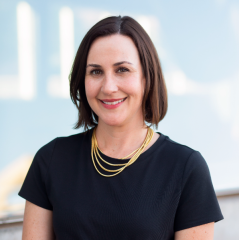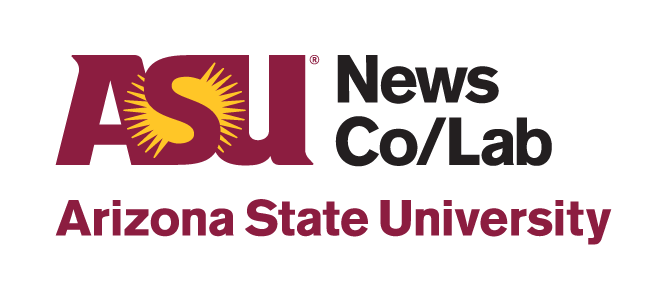Opening new lines of communication: The conversation
by Kristy Roschke, Celeste Sepessy and Gail Rhodes
The following case study is from an academic paper presented at the Engaged Journalism Pre-Conference at the 2019 International Communication Association annual conference. This blog post series presents a condensed version of the study’s findings. Read the first post here.
Several aspects of the Crossing the Line project were new to the Bee, in particular convening and facilitating group discussion. Whereas historically journalists may have viewed discussion facilitation as a form of advocacy as it can show support for an idea or cause (Fisher, 2016) and not part of their typical role, the Bee group viewed such direct involvement as imperative to repairing and building trust. Kieta explained:
I don’t think it’s useful, I think it’s essential. I think every newsroom needs to be working on a way to increase its transparency and also to find a way to help increase the news fluency of its audience. If we’re not doing that, we’re in deep trouble. I was aware of that when I started this project, and I’m completely convinced of it today.
Commitment to the project from newsroom leadership was integral to getting it off the ground, and assigning an enthusiastic reporter to be the project point person was critical to its sustained success. Even with these pieces in place, however, tackling a project that is beyond the typical scope of the newsroom was challenging.
I very early on discovered that the audience has a very different idea of what we do than the reality. We do a terrible job of explaining how we go about our business and what we do. There has to be a better way to get that to scale at a higher level so that we can have more understanding.
Co-founder Eve Pearlman describes Spaceship Media’s role as helping provide an opportunity to know the community differently, and an opportunity to listen where a news organization may not have before. Pearlman said the dialogue journalism process is a way to learn about the “texture” of the community and to help news organizations serve the community in a “really direct way” by reporting for the project.
Pearlman notes that Spaceship Media supports the goals of the partner and tries not to be prescriptive in helping news organizations reach “a heightened level of awareness around the conversations.”
Bee reporter Calix emphasized that, though it was important from a community engagement perspective to have the Bee leading the project, Spaceship Media’s expertise in creating and facilitating the conversations was critical to the success of the project.
One key factor to the project design that runs contrary to typical newsroom activities is that the main goal for Crossing the Line was not to generate content, but to engage community members in the conversation about important issues in the city. In a traditional newsroom routine, reporters would reach out to their sources to provide insight on a set of predetermined questions on a particular topic, but in this case, the goal was to generate multiple conversations around a broader topic. Bee leadership viewed the project as the start of a deeper connection to the community, one that would have many dividends. The conversation—not the content—was the main priority for the Bee, though newsroom leadership did acknowledge the benefits of other potential outcomes, including reaching new audiences, developing relationships with new sources, and gaining new public insights.
Pearlman acknowledges that measuring the success of dialogue journalism projects can be difficult because the desired outcomes do not necessarily align with content engagement goals reporters are regularly tasked with achieving. Pearlman also believes relevant and impactful content emerges from the dialogue journalism process that features different voices and points of view.
Recruitment and surveying
Calix recruited participants via a Bee article announcing the project and through community groups. Interested residents completed an online survey that included several questions integral to Spaceship Media’s dialogue journalism process:
- What do you think of people living on the other side of Fresno?
- What do you think they think about you?
- What do you want to know about them and their neighborhood?
- What do you want them to know about you and your neighborhood?
More than 80 people responded to this initial survey, and respondents became part of the ongoing project dialogue. Nearly 50% of the survey respondents said they identified with south Fresno; 30% with north Fresno; 6% with both; and 12% with other parts of Fresno.
Most of the respondents indicated they wanted to participate in the project in order to dispel myths, learn more about what issues are important to those from the other side of town, and discuss ways to develop solutions and make greater connections between residents in disparate geographic areas.
In addition to Spaceship Media’s standard questions, the survey also featured questions the News Co/Lab developed to learn more about local news habits of the participants. The purpose of these questions was to connect the act of convening civil community dialogue to improved public sentiment about local news, and in particular the Bee, while also learning more about how information is shared within the community and what structures of trust were already in place.
- Where do you get your news about your community (friends, family, online, Bee)?
- What do you want the Fresno Bee to know about you and your neighborhood?
- What do you want to know about the Fresno Bee?
- How do you feel about how the Bee portrays/reflects your community/neighborhood?
Responses to the News Co/Lab-generated questions indicated that residents want the Bee to know more about the diversity and complexities of their neighborhoods and to report on the positive developments in addition to challenges different neighborhoods face. Several participants said they want to know more about the Bee’s editorial process, including how reporters are assigned stories, the diversity of its staff and leadership, how it plans to ensure more equal coverage of the city, and who makes up its editorial board.
Read previous parts of the series here:

Kristy Roschke, managing director of the ASU News Co/Lab, is a media scholar and educator. Her research interests include misinformation, media literacy education and media trust. Roschke has developed curriculum and taught journalism and media literacy courses at the high school and university level for nearly 20 years.
